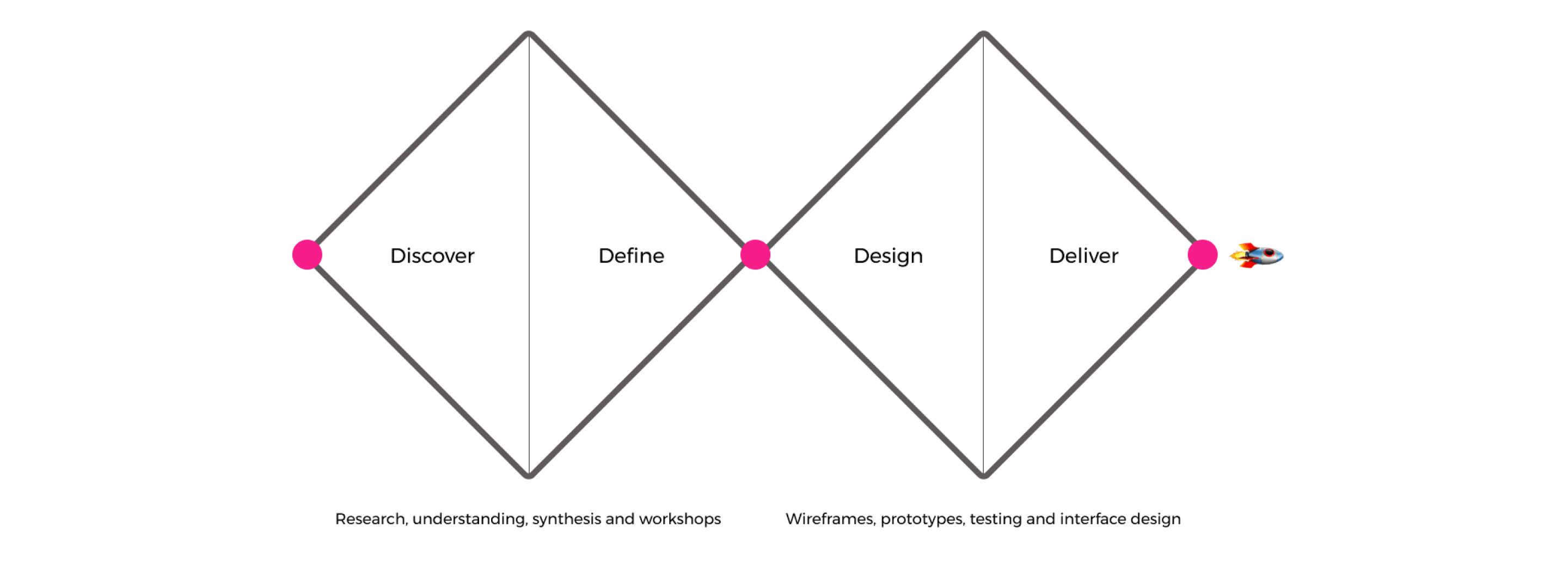A fine tuned design process brings your business & customer needs together to create digital products that help you succeed.

Over the years, I’ve worked with many companies and helped tailor their design process to suit specific business contexts. Generally speaking, there are two main contrasting approaches:
1. Lean and Agile Approach: In the context of startups or scale-ups, where resources are often limited and timelines are tight, a lean and fast design process works well. This approach emphasizes speed to market and efficient resource utilization. Notably, books like The Lean Startup by Eric Reiss advocate for this strategy. However, it’s essential to recognize that while effective, this streamlined approach may sacrifice some benefits due to its focus on efficiency.
2. In-Depth Customer Discovery Approach: For companies with more time and budget at their disposal, a different path emerges. This approach involves diving deep into customer discovery before embarking on the design phase. By thoroughly understanding user needs, motivations, and pain points, organizations can create more informed solutions. However, this method comes with trade-offs, including longer development cycles and potential disadvantages.
The choice of design process depends on your specific situation and goals, but, let’s be clear, it is 100% certain that you need a design process to effectively manage design projects, this is where I can step in and help set one up, iterate on your existing one and then scale a team around it to help you hit your business goals faster.
Below is an example of a standard process I use to paint a picture of how it can work. Each phase can be iterated on and activities changed depending on our needs.
01. Discover
First, I will need to know everything about your business, customers, direct and indirect competition, data analytics and project goals. I will then need to ask lots of questions to your users via interviews and surveys, we will also map out competitors products and customer journeys and look at for any gaps and opportunities. Once we understand that I can start to define what we want to achieve and how the design process and experimentation can get us there. This phase usually contains lots of coffee drinking.
Meet & Brief
Define Objectives
Planning
Research
Content
Design Workshops
Wireframes
Prototypes
User testing
Evaluation
02. Define
In the Define phase, we get creative and have fun, we do lots of design exploration, such as workshops, sketching, wire-framing, prototyping, user testing, card sorting and design iterations in order to find the best solution possible that matches the main objectives. Once we have the design direction well tested, set and approved, we move into the design stage. If we already have design systems we will use them at this point.
03. Design
In the Design phase we get really visual and create the final look and feel of the project or feature, this involves the imagery used, typography, design system refinement, grids, layouts and more that will match your brand and business objectives. Once this is user tested, approved and everyone is happy, we are ready to work with the dev team for development & implementation.
Interface Design
Prototypes
Final User Testing
Design System
Documentation
Project Hand Off
Design Review
Support
Modification
Evaluation
04. Deliver
The project is almost there! In the Deliver phase I work with you and your development team to ensure that what we have designed and created in the previous 3 steps is accurate and working in live code. This usually involves some back and forth to refine and then launch.
Launch it! 🚀
That moment we have all been waiting for. Launch it and see the results come in fast!
Once the project is shipped and working well we continue to monitor usage and modify the designs as required.

© Julio Castellano